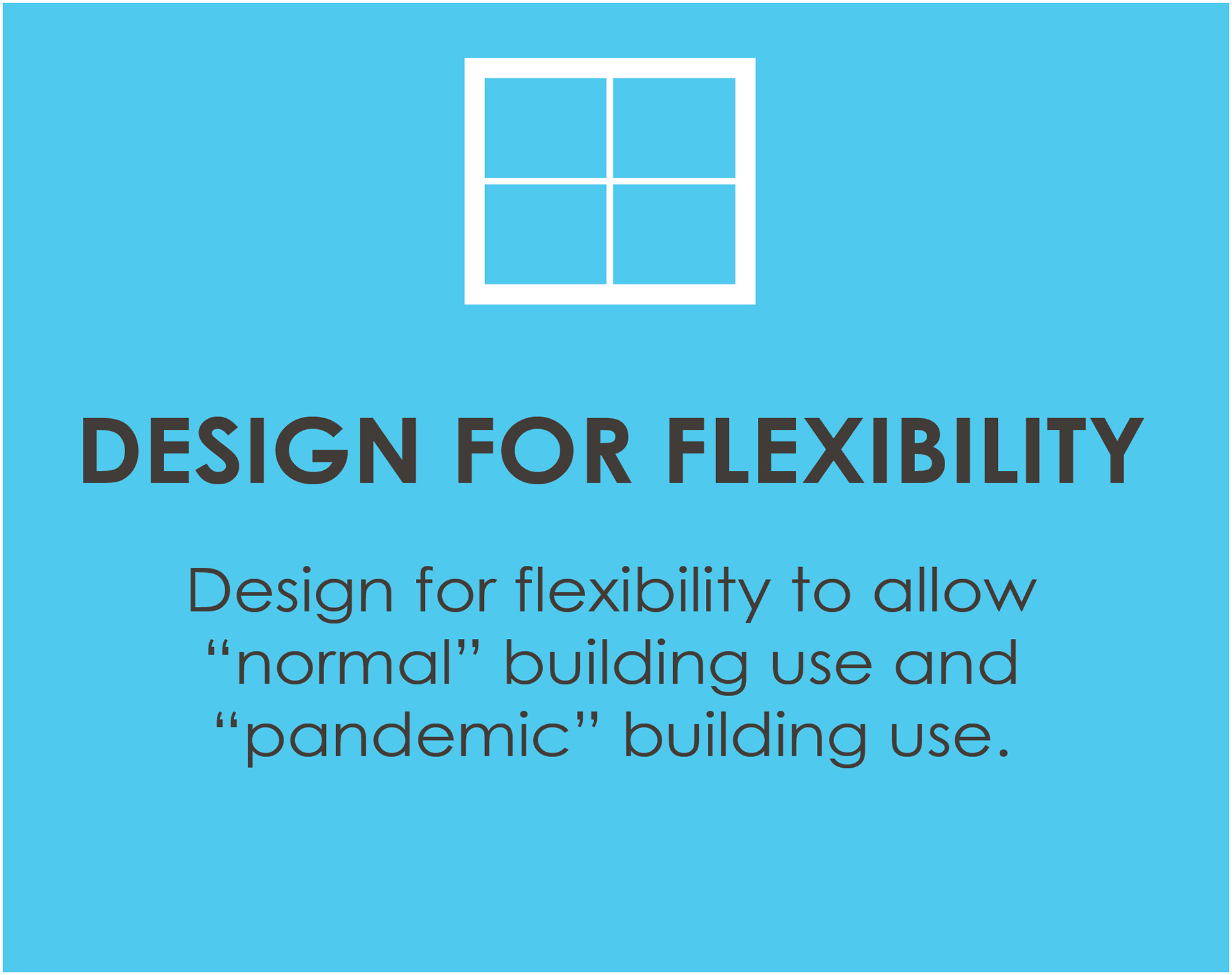
Design for flexibility to allow “normal” building use and “pandemic” building use.
- In pandemic times, convert small conference rooms that cannot support socially distant meetings into temporary private offices.
- In pandemic times, use temporary divider panels at open workstations to increase height of partitions.
- Consider breaking building occupants into smaller groups and providing each group with dedicated resources, such as a break room, restrooms, work room, etc., to limit number of occupant interactions.
- Reconsider shared storage, such as coat closets, and instead either provide dedicated lockers or require occupants to keep personal belongings with them at all times.
- Consider the benefit of designing more private offices in lieu of open workstations.
- Provide additional single-user toilet rooms to decrease demand of large multi-user restrooms.
- Consider increasing the number of shared equipment, such as hoteling workstations or workout equipment, so that in pandemic times, some equipment may be taken out of order to accommodate social distancing.
- Provide additional orientations and training to staff in an effort to create a sense of preparedness, calm, security, and confidence.

